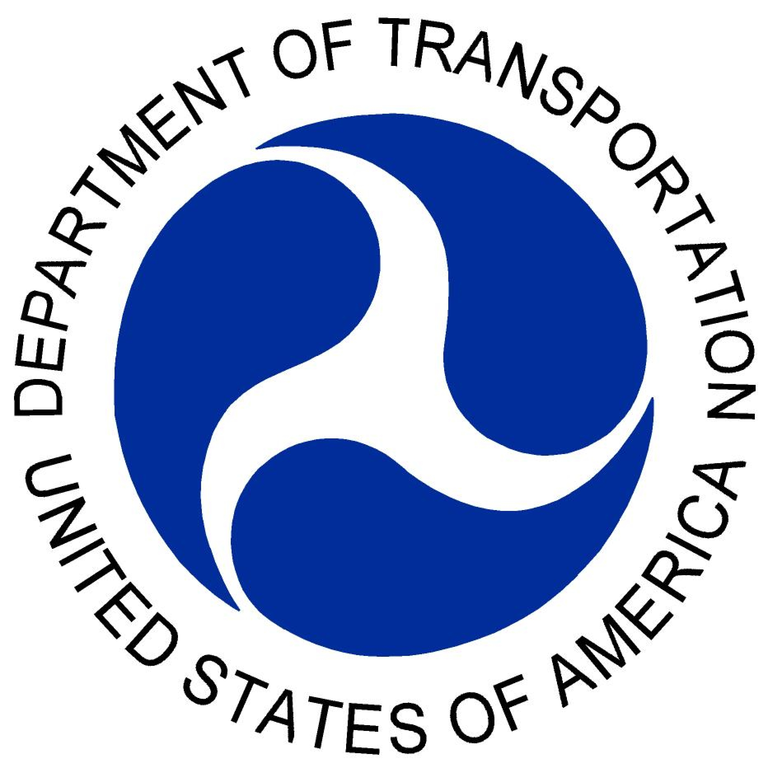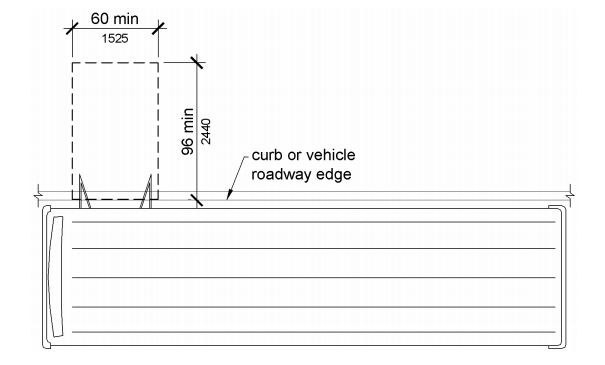Americans with Disabilities Act (ADA) Standards for Transportation Facilities
Adopted by the U.S. Department of Transportation (2006)
About this Edition of the ADA Standards for Transportation Facilities
This edition of the ADA Standards was adopted by the U.S. Department of Transportation in 2006 for public transportation facilities covered by the ADA in new construction and alterations. DOT’s ADA Standards apply to facilities used by state and local governments to provide designated public transportation services, including bus stops and stations, and rail stations.
These standards are closely based on the Board's ADA Accessibility Guidelines (ADAAG) but include additional requirements concerning:
-
Location of Accessible Routes (206.3)
-
Detectable Warnings on Curb Ramps (406.8)
-
Bus Boarding and Alighting Areas (810.2.2)
-
Rail Station Platforms (810.5.3)
Other types of facilities covered by the ADA are subject to the U.S. Department of Justice’s 2010 ADA Standards.
206.3 Location.
Accessible routes shall coincide with or be located in the same area as general circulation paths. Where circulation paths are interior, required accessible routes shall also be interior.
Advisory 206.3 Location. The accessible route must be in the same area as the general circulation path. This means that circulation paths, such as vehicular ways designed for pedestrian traffic, walks, and unpaved paths that are designed to be routinely used by pedestrians must be accessible or have an accessible route nearby. Additionally, accessible vertical interior circulation must be in the same area as stairs and escalators, not isolated in the back of the facility
Note to Reader: The Department of Transportation’s ADA standards include additional requirements for the location of accessible routes:
206.3 Location. Accessible routes shall coincide with, or be located in the same area as general circulation paths. Where circulation paths are interior, required accessible routes shall also be interior. Elements such as ramps, elevators, or other circulation devices, fare vending or other ticketing areas, and fare collection areas shall be placed to minimize the distance which wheelchair users and other persons who cannot negotiate steps may have to travel compared to the general public.
Note to Reader: The Department of Transportation’s ADA standards require detectable warnings on curb ramps:
406.8 Detectable Warnings. A curb ramp shall have a detectable warning complying with 705. The detectable warning shall extend the full width of the curb ramp (exclusive of flared sides) and shall extend either the full depth of the curb ramp or 24 inches (610 mm) deep minimum measured from the back of the curb on the ramp surface.
810.2.2 Dimensions.
Bus stop boarding and alighting areas shall provide a clear length of 96 inches (2440 mm) minimum, measured perpendicular to the curb or vehicle roadway edge, and a clear width of 60 inches (1525 mm) minimum, measured parallel to the vehicle roadway.
Note to Reader: The Department of Transportation’s ADA standards indicate that compliance is required to the extent construction specifications are within a public entity's control:
810.2.2 Dimensions. Bus boarding and alighting areas shall provide a clear length of 96 inches (2440 mm), measured perpendicular to the curb or vehicle roadway edge, and a clear width of 60 inches (1525 mm), measured parallel to the vehicle roadway. Public entities shall ensure that the construction of bus boarding and alighting areas comply with 810.2.2, to the extent the construction specifications are within their control.
Figure 810.2.2 Dimensions of Bus Boarding and Alighting Areas
810.5.3 Platform and Vehicle Floor Coordination.
Station platforms shall be positioned to coordinate with vehicles in accordance with the applicable requirements of 36 CFR Part 1192. Low-level platforms shall be 8 inches (205 mm) minimum above top of rail.
EXCEPTION: Where vehicles are boarded from sidewalks or street-level, low-level platforms shall be permitted to be less than 8 inches (205 mm).
Note to Reader: The Department of Transportation’s ADA standards note permitted alternatives where compliance is not operationally or structurally feasible in light rail, commuter rail, or intercity rail systems:
810.5.3 Platform and Vehicle Floor Coordination. Station platforms shall be positioned to coordinate with vehicles in accordance with the applicable requirements of 36 CFR part 1192. Low-level platforms shall be 8 inches (205 mm) minimum above top of rail. In light rail, commuter rail, and intercity rail systems where it is not operationally or structurally feasible to meet the horizontal gap or vertical difference requirements of part 1192 or 49 CFR part 38, mini-high platforms, car-borne or platform-mounted lifts, ramps or bridge plates or similarly manually deployed devices, meeting the requirements of 49 CFR part 38, shall suffice.
EXCEPTION: Where vehicles are boarded from sidewalks or street- level, low-level platforms shall be permitted to be less than 8 inches (205 mm).
Advisory 810.5.3 Platform and Vehicle Floor Coordination. The height and position of a platform must be coordinated with the floor of the vehicles it serves to minimize the vertical and horizontal gaps, in accordance with the ADA Accessibility Guidelines for Transportation Vehicles (36 CFR Part 1192). The vehicle guidelines, divided by bus, van, light rail, rapid rail, commuter rail, intercity rail, are available at www.access-board.gov. The preferred alignment is a high platform, level with the vehicle floor. In some cases, the vehicle guidelines permit use of a low platform in conjunction with a lift or ramp. Most such low platforms must have a minimum height of eight inches above the top of the rail. Some vehicles are designed to be boarded from a street or the sidewalk along the street and the exception permits such boarding areas to be less than eight inches high.



User Comments/Questions
Add Comment/Question